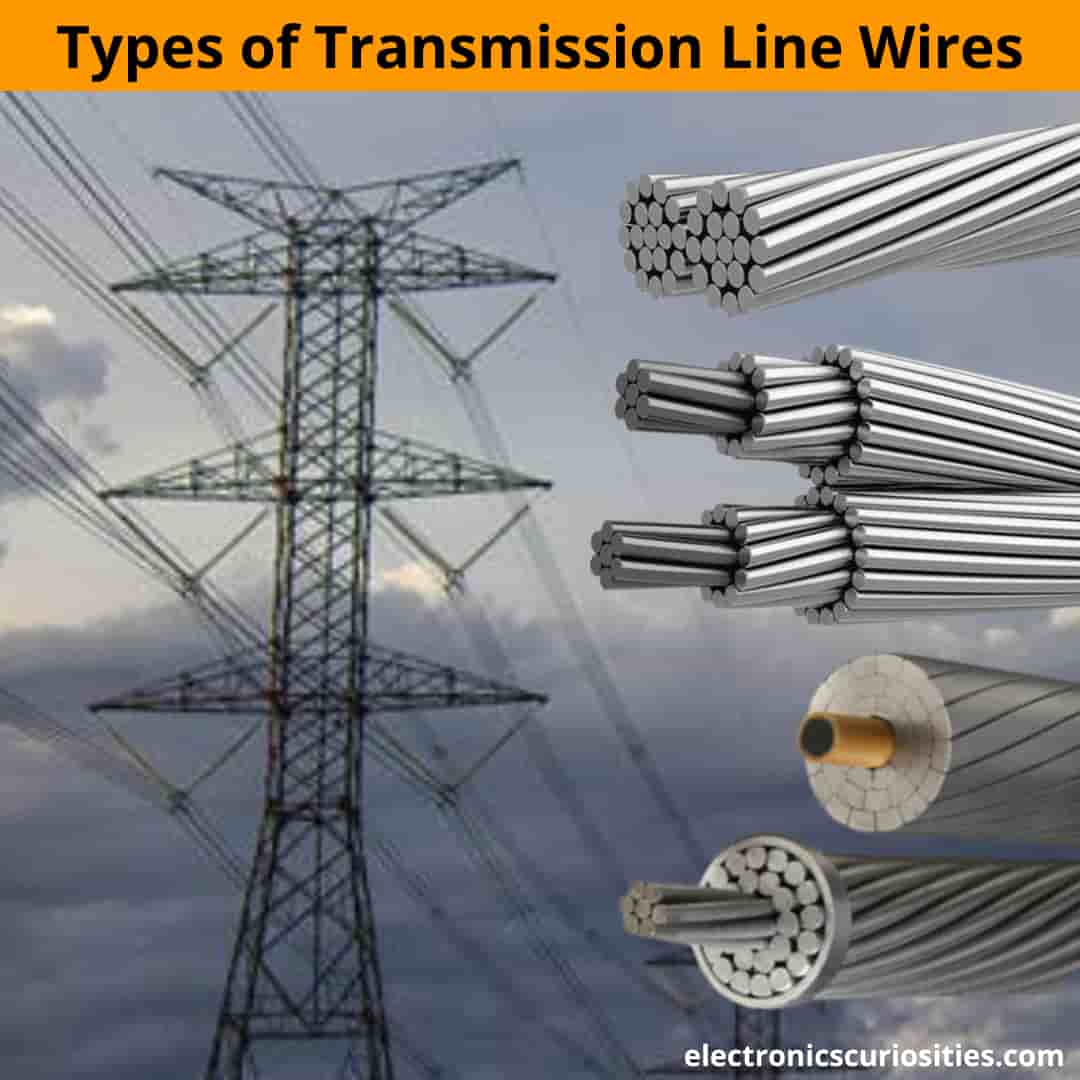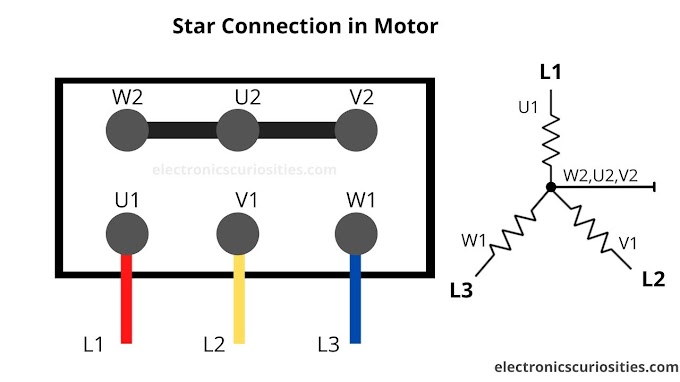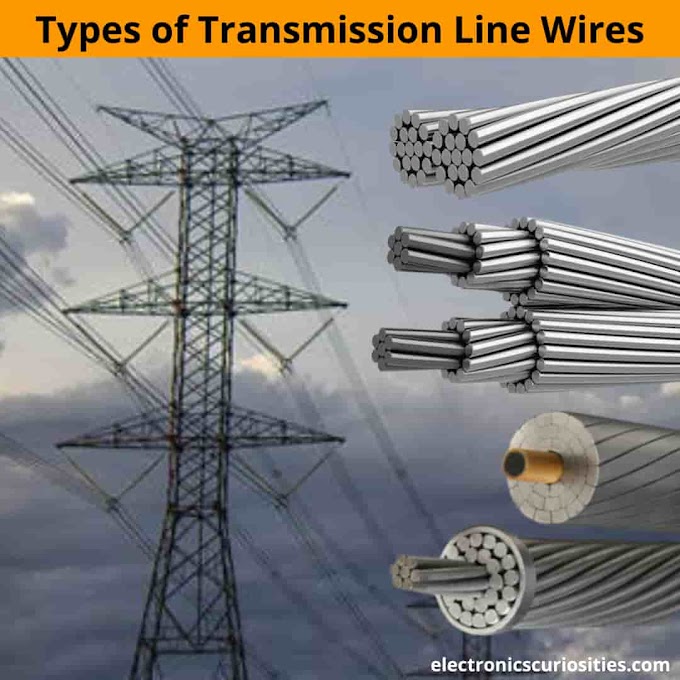Types Of Conductor materials used in Transmission Line
What is a conductor? today, apart from this, which conductor is more useful copper and aluminum. And with this, we will also try to understand the types of Transmission Line Conductors.
What is a Conductor?
The job of a conductor is to carry electric power from one place to another and with the least resistance. By the way, there are many such materials whose conductivity is very high. Like gold and silver but it is not possible to use them for wires in electrical systems, because they are very expensive.
For this reason, we have only two main materials that are best left, copper and aluminum. But in both of these, aluminum is the only option left today.
Advantages of aluminum wire
By the way, the resistance of aluminum is 60% more than that of copper, which is a weakness of aluminum.
For example, suppose we have a 1-foot long copper conductor and an aluminum conductor of exactly the same size. So the resistance of the aluminum conductor will be 60% more than that of the copper conductor.
Copper-aluminium-wire-in-transmission-line
But there is some drawback to copper as well, such as copper is 3 times more heavy than aluminum and copper is also much more expensive than aluminum. At present, 1kg of copper is available for Rs 500, while the cost of 1 kg of aluminum is only Rs 100.
Apart from this, a big problem in copper is that copper wire gets rusted very easily, which is very harmful to its long life. You must have seen that the color of copper utensils changes in your homes in 2-3 days only because of the carbon coming on them.
This is also one of the main reasons due to which we do not use copper wire in the transmission line.
Also Read:- Why are colored balls used in Power Transmission Lines?
copper-vs-aluminium-weight
Once the aluminum wire is installed, we consider its life value for 100 years, so the aluminum wire is considered to be the best in the transmission line and it is used only.
But you will still find copper wire being used in some older substations. There they are used because there these wires have to handle a lot of electrical currents. But still today the chances of getting copper wire are very less. Aluminum wire is being used everywhere in the transmission line.
Types of Transmission Line Conductor | Types of Transmission Line Wire
1) Solid Conductor
aluminum-solid-conductor-in-transmission-line
It is used in the bus of electrical substation but it is used in short distance bus.
2) Hollow Conductor
It is also used in electrical substation bus and it is also used in short distance bus.
hollow conductor in transmission line
Their length cannot be kept longer. Because if they are made longer then it will be very difficult to take them to the substation. Because these wires are difficult to bend easily.
3) Stranded Conductor
Aluminum Stranded Conductor in transmission lines
It is made of thin wire, due to which they can be bent easily and they can be transmitted quite easily from one place to another by wrapping it in a roll.
4) AAC - All Aluminum Conductor Transmission line
All the conductors in this are made of aluminum. That's why AAC wire does not get rusted. Because they do not rust easily, they are used more near water areas.
5) AAAC - All Aluminum Alloy Conductors in transmission line
Even in AAAC wire, all the wires are made of aluminum, but due to aluminum being very flexible, some other metal is mixed in it. Due to which their strength is increased.
They are used in railway crossings and hilly areas.
6) ACSR - Aluminum Conductor Steel Reinforced in transmission line
It is the most commonly used conductor. The wire between it is of Galvanized Steel. Due to which the strength of the ACSR conductor increases significantly.
Due to the use of steel in this conductor, it does not expand much when heated. For this reason, wherever we use the ACSR conductor, we can keep the gap between two electric poles more.
ACSR conductors are used on both high voltage lines and flame voltage lines.
Type Of ACSR Transmission Line Conductor
1) Dog – The conductor used from 33KV to 66KV is called a dog conductor. Its current carrying capacity is up to 300 amps. It consists of 6 strands of aluminum, and 7 strands of steel.
2) Panther – It is used from 66KV voltage to 132KV voltage. In this, current can be given up to 480 amperes. It consists of 30 strands of aluminum, and 7 strands of steel.
3) Zebra – Zebra conductor is used for 220kV voltage. In this, current can be given up to 735 amperes. Zebra conductor has 54 strands of aluminum and 7 strands of steel.
4) Moose – This conductor is used on 220 kilovolts or 440-kilovolt voltage lines, which can easily withstand current up to 800 amperes.
It also has 54 aluminum and 7 steel strands like the zebra conductor. But the thickness of the strand in the Moose conductor is more than that of the Zebra conductor. For this reason, these zebras can withstand more current than the conductor.
7) ACSS - Aluminum Conductor Steel Supported
ACSS conductors are being replaced by ACSR conductors today, as ACSS conductors have more heat withstanding strength.
When the current capacity on the wire is increased, the temperature of the wire also increases. Hence ACSS conductor is gradually being replaced with an ACSR conductor for the time to come.
Because ACSS conductor can easily withstand temperature up to 180-degree Celsius, whereas ACSR conductor can withstand only up to 100 degrees Celsius temperature.
So I, hope that today you have got answers to many questions related to Types of Transmission Line Conductors used in transmission lines.
Thank You!
Have A Great Day!




